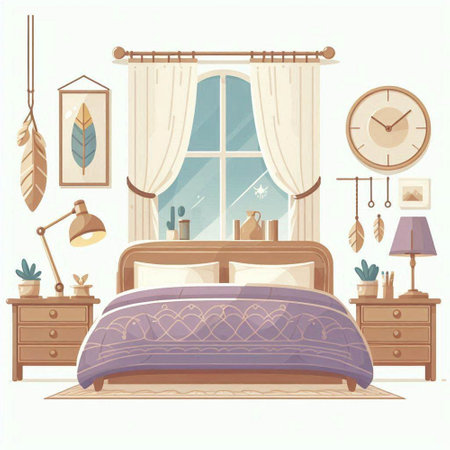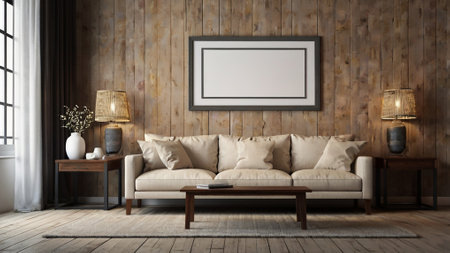Introduction to Heritage Hues
The timeless allure of Victorian and Edwardian colour schemes continues to captivate homeowners and interior designers across the United Kingdom. These heritage hues—once a symbol of sophistication and social aspiration in 19th- and early 20th-century Britain—are experiencing a renaissance within modern British interiors. From stately townhouses to contemporary flats, the nuanced palettes of these eras evoke nostalgia while offering a sense of refined elegance perfectly suited to today’s living spaces. This article embarks on an exploration of the enduring charm of Victorian and Edwardian colour palettes, examining their historical roots and considering their relevance in the context of contemporary design. With a focus on authentic shades, period-appropriate finishes, and subtle modern adaptations, we invite you to discover how these classic tones can enrich and elevate your home, seamlessly blending the past with present-day British lifestyle.
Historical Foundations: Victorian and Edwardian Colour Theory
The colour schemes that define Britain’s Victorian and Edwardian homes are more than just aesthetic choices; they are the product of advances in pigment technology, shifting social ideals, and a growing appreciation for both tradition and innovation. Understanding these historical foundations is key for anyone seeking to authentically restore or sympathetically modernise period properties.
Key Pigments and Paints
In the mid-to-late 19th century, the industrial revolution brought about significant changes in paint production. Natural earth pigments such as ochres, umbers, and siennas were widely used, but new synthetic pigments like chrome green and Prussian blue became increasingly popular. The introduction of ready-mixed paints by firms such as Dulux and Farrow & Ball made it easier for homeowners to achieve rich, consistent colours throughout their interiors.
| Pigment/Paint | Typical Use | Period Popularity |
|---|---|---|
| Lead White | Ceilings, cornices | Victorian & Edwardian |
| Venetian Red | Dining rooms, hallways | Victorian |
| Verdigris Green | Drawing rooms, exterior doors | Edwardian |
| Prussian Blue | Sitting rooms, bedrooms | Both periods |
| Cream Distemper | Kitchens, utility areas | Edwardian (increasingly) |
Cultural Influences on Colour Choices
The late Victorian era was characterised by formality and a penchant for deep, saturated hues—burgundy, forest green, navy—reflecting the influence of the Gothic Revival and Aesthetic movements. By contrast, the Edwardian period ushered in lighter, fresher palettes inspired by the Arts and Crafts movement’s celebration of nature and craftsmanship. This shift towards airier shades such as sage green, duck egg blue, and off-white mirrored changing attitudes to light and hygiene within the British home.
The Role of Social Status and Technological Progress
The choice of colour was also shaped by class distinction. In grander homes, elaborate stencilling and gilding signalled wealth and sophistication; meanwhile, working-class households favoured practical distempers or calcimine washes. The advent of gas lighting influenced colour selection too—darker shades absorbed sooty residues better than paler ones.
Legacy in Modern Living Spaces
Today’s heritage-inspired interiors often blend these historic palettes with contemporary finishes. By appreciating the origins of Victorian and Edwardian colour theory—and recognising how cultural trends and technological advances shaped each era’s approach—we can create living spaces that honour the past while embracing the comfort and convenience of modern British life.

3. Iconic Colour Combinations: Palettes and Their Meanings
When it comes to reviving Victorian and Edwardian interiors, understanding the distinctive colour palettes is key to achieving an authentic yet inviting modern living space. These periods were defined by their meticulous approach to interior schemes, with each hue carefully chosen not only for its aesthetic appeal but also for its symbolic significance and practicality.
Deep Damasks: Richness and Prestige
One of the most evocative colours associated with late Victorian interiors is deep damask red. This shade, often used in drawing rooms and dining areas, was a mark of luxury and refinement. The rich crimson tones brought warmth to otherwise sombre British interiors, while also symbolising wealth, hospitality, and a sense of occasion. Damask reds pair beautifully with gilded picture frames, dark woods, and heavy textiles, making them a timeless choice for spaces meant to impress.
Sage Greens: Calm and Connection to Nature
Sage green was a staple in Edwardian colour schemes, reflecting the eras growing appreciation for nature and light. This gentle green brings a calming atmosphere to living spaces, echoing the lush English countryside just beyond the window. Sage is especially effective when paired with off-whites or creams on woodwork and cornices, creating an airy yet grounded environment that feels both traditional and fresh.
Duck Egg Blues: Tranquillity and Sophistication
Duck egg blue emerged as a popular choice in both late Victorian and Edwardian homes, symbolising serenity and understated elegance. Its cool undertones make it ideal for bedrooms or morning rooms where relaxation is paramount. This soothing blue pairs seamlessly with polished brass accents and crisp white trims, conjuring images of sunlit parlours and tranquil retreats. The versatility of duck egg blue means it can be combined with darker woods or pale stone flooring for a look that balances heritage with modern comfort.
The Symbolism Behind Heritage Selections
Each of these iconic hues carries meaning rooted in British culture. Deep reds suggest formality and tradition; sage greens evoke renewal; duck egg blues offer peace. Together, these palettes tell the story of evolving domestic life across two transformative centuries—where colour choices were not merely decorative but reflective of social aspiration, technological progress, and a longing for comfort within the home.
Pairing Hues for Modern Living
For those updating period properties or introducing heritage charm into contemporary homes, combining these classic colours thoughtfully is essential. Consider using deep damask as an accent wall against sage green panelling or incorporating duck egg blue soft furnishings in a room with original floorboards. By respecting historical palettes while balancing them with modern needs—such as increased light or open-plan layouts—you can ensure your home remains both authentically British and perfectly suited to twenty-first-century life.
4. Incorporating Heritage Colours in Modern Homes
Translating the elegance of Victorian and Edwardian colour schemes into modern British homes requires a careful balance between tradition and practicality. While original period interiors often featured deep, rich hues, today’s living spaces benefit from a nuanced approach that respects heritage while embracing contemporary needs. Here are some practical tips for harmonising classic style with modern life:
Choosing the Right Palette
Begin by identifying key heritage shades – such as sage green, dusky rose, ochre, and deep navy – that align with your space’s natural light and proportions. Use softer tones for smaller rooms to avoid overwhelming the space, reserving richer colours for feature walls or architectural details like cornices and skirting boards.
Blending Old and New
Incorporate modern materials and furnishings alongside traditional colours. For instance, pair a heritage-inspired wall colour with sleek, contemporary lighting or minimalist furniture. This creates an inviting contrast that pays homage to history without feeling dated.
Practical Examples for Different Spaces
| Room | Heritage Colour | Modern Touch |
|---|---|---|
| Living Room | Olive Green Walls | Velvet Sofa in Neutral Tones |
| Kitchen | Cream Cabinetry with Burgundy Accents | Stainless Steel Appliances |
| Bedroom | Pale Blue Feature Wall | Minimalist Oak Furniture |
Enhancing Functionality
Victorian and Edwardian homes were designed for different lifestyles, so adapt these schemes to suit modern functions. For example, use heritage shades to zone open-plan areas or highlight built-in storage solutions, ensuring each space remains both beautiful and functional.
Finishing Touches
Add period-appropriate accessories like cast iron radiators or stained glass accents where possible. Layer with contemporary textiles and art to create a cohesive look that feels both timeless and fresh.
5. Material Matters: Authentic Finishes and Techniques
When restoring or recreating the classic Victorian and Edwardian colour schemes in a modern living space, the materials and finishes you select play a crucial role in achieving an authentic look. Period-appropriate paints, wallpapers, and decorative finishes not only reflect historical accuracy but also ensure longevity and respect for original craftsmanship.
Selecting Traditional Paints
Victorian and Edwardian interiors were characterised by rich pigments and natural materials. To mirror these effects today, opt for heritage paint ranges from reputable UK suppliers such as Farrow & Ball, Little Greene, or Edward Bulmer Natural Paints. These companies offer colours meticulously researched from historic buildings and archives, using formulas that replicate the subtle matt sheen of limewash or distemper paints typical of the era.
Wallpaper Revival
Wallpaper was a hallmark of period interiors, often featuring intricate florals, damasks, or geometric patterns. To source truly authentic designs, look to British manufacturers like Morris & Co., Cole & Son, or Zoffany. When applying wallpaper in older properties, use traditional paste-the-wall methods and breathable linings to prevent moisture build-up—key to preserving original plasterwork.
Finishing Touches: Woodwork and Metals
Original skirtings, cornices, picture rails, and fireplaces were typically finished with oil-based eggshell or gloss paints. For restoration projects, consider stripping back layers of modern paint to reveal—and possibly replicate—the original palette beneath. Where possible, retain or restore existing features with conservation-grade materials sourced from specialists such as The Conservation Studio or Historic England’s supplier directory.
Best Practice for Preservation
Preservation is about more than aesthetics; it’s about protecting your home’s fabric for future generations. Always prioritise reversible techniques and avoid over-restoration. Lime plasters, breathable paints, and gentle cleaning products are preferable to modern alternatives that can trap moisture or damage underlying substrates. Consult with a conservation professional if you’re unsure—many UK councils have heritage officers who can advise on best practice for listed properties.
Sourcing UK-Based Suppliers
The UK boasts a wealth of heritage specialists. When sourcing period-appropriate materials, check credentials—look for suppliers registered with organisations like SPAB (Society for the Protection of Ancient Buildings) or those recommended by Historic Houses Association. Supporting local craftspeople not only ensures authenticity but also helps maintain Britain’s unique architectural legacy.
6. Case Studies: Bringing History Home
Across the United Kingdom, homeowners are rediscovering the beauty and practicality of Victorian and Edwardian colour schemes by thoughtfully integrating them into modern living spaces. These real-life case studies illustrate how period palettes can be revived, preserving heritage while meeting contemporary needs.
Restored Victorian Terrace in London
In North London, a classic Victorian terrace has been transformed with a sophisticated palette of deep forest greens and warm terracotta tones, echoing original 19th-century hues. The owners preserved decorative cornices and ceiling roses, accentuating these features with subtle contrasting colours. Modern furnishings in neutral shades ensure the space remains comfortable and inviting, blending old-world charm with current tastes.
Edwardian Villa in Manchester
This detached Edwardian home showcases rich indigo blues and buttery creams throughout its spacious rooms. Restoration included careful paint analysis to match the original wall colours while upgrading insulation and lighting for energy efficiency. The result is a light-filled home where traditional detailing meets contemporary functionality—an ideal setting for family life steeped in history.
Cotswolds Cottage Revival
A picturesque Cotswolds cottage has embraced heritage hues by using muted sage greens and dusky pinks typical of late Victorian interiors. The owners sourced period-appropriate paints and restored woodwork to its former glory. Modern appliances are cleverly concealed behind cabinetry painted in matching tones, ensuring both authenticity and convenience.
Urban Flat with a Period Twist
In central Bristol, a top-floor flat within an Edwardian mansion block uses bold olive greens and mustard yellows to define open-plan living spaces. Original mouldings were carefully repaired, then highlighted with off-white accents. This juxtaposition of heritage colours against minimalist furniture demonstrates that historical palettes can be both stylish and practical in compact urban homes.
Lessons from Successful Restorations
These examples reveal that reviving Victorian and Edwardian colour schemes isn’t about rigid replication but thoughtful adaptation. By respecting architectural details and balancing tradition with modern comforts, homeowners can create unique interiors that honour Britain’s decorative past while providing warmth, practicality, and style for everyday living.
7. Care, Maintenance, and Preservation
Safeguarding Heritage Colour Schemes
Preserving the aesthetic and historic value of Victorian and Edwardian colour schemes requires ongoing attention and an understanding of traditional finishes. Authentic maintenance not only enhances the visual appeal but also upholds the cultural significance of these heritage properties in line with British building conservation standards.
Routine Inspection and Gentle Cleaning
Begin with regular inspections to spot early signs of wear, such as flaking paint or moisture ingress. Use gentle cleaning methods—like soft brushes and pH-neutral soaps—to avoid damaging original surfaces or delicate period features. Avoid abrasive cleaners that could strip away historic finishes.
Repairing with Sensitivity
When repairs are necessary, opt for materials and techniques that match the original where possible. For example, use lime-based plasters and breathable paints in keeping with the property’s age and specification. This approach ensures compatibility and longevity, preventing future deterioration caused by incompatible modern materials.
Repainting: Matching Tradition with Innovation
If repainting is required, always research period-appropriate palettes using resources from English Heritage or The Victorian Society. Many paint manufacturers now offer heritage ranges that reflect original hues and finishes—whether matt distempers, eggshells, or glosses. Where possible, retain a sample of the original paint as a reference for future touch-ups.
Protecting Against Environmental Factors
Victorian and Edwardian homes are often susceptible to damp, condensation, and UV exposure. Employ preventative measures such as maintaining good ventilation, repairing guttering promptly, and applying UV-resistant coatings to external woodwork. These steps help preserve both colour vibrancy and structural integrity.
Professional Conservation Advice
For significant projects or listed buildings, consult a conservation specialist familiar with British standards (such as BS 7913:2013). They can guide you on best practice for heritage paint removal, substrate repairs, or compatible decorative treatments—ensuring your home’s character remains intact for future generations.
Documentation and Ongoing Stewardship
Keep detailed records of all maintenance activities, paint formulas used, and any changes made. This documentation supports continuity in care and provides invaluable information for subsequent custodians of your home.
By following these guidelines rooted in British conservation practice, you’ll ensure that your Victorian or Edwardian colour scheme continues to enrich your living space while honouring its distinguished past.


